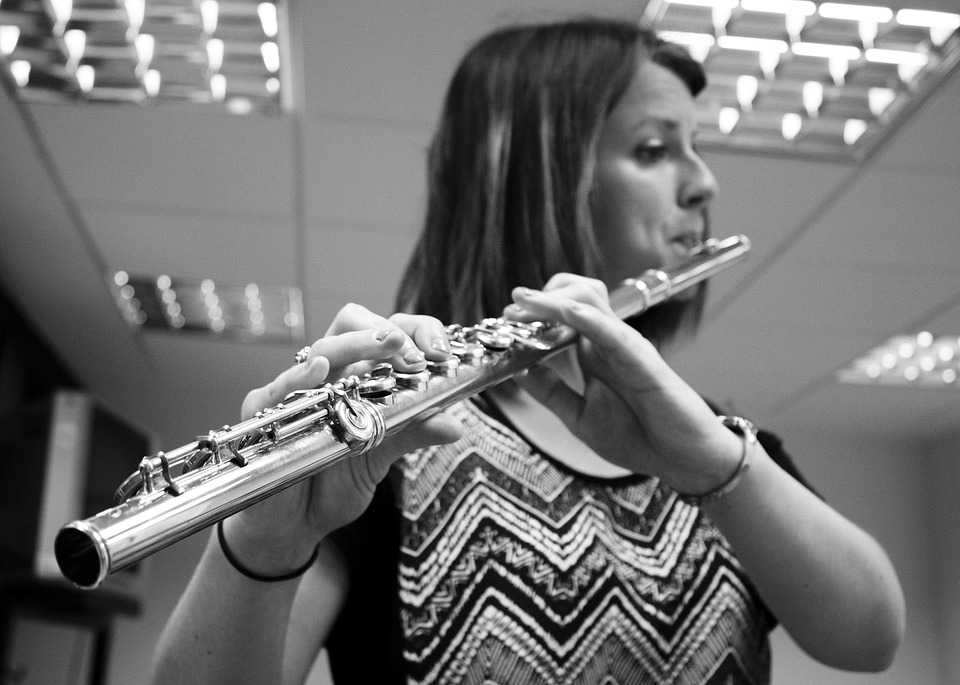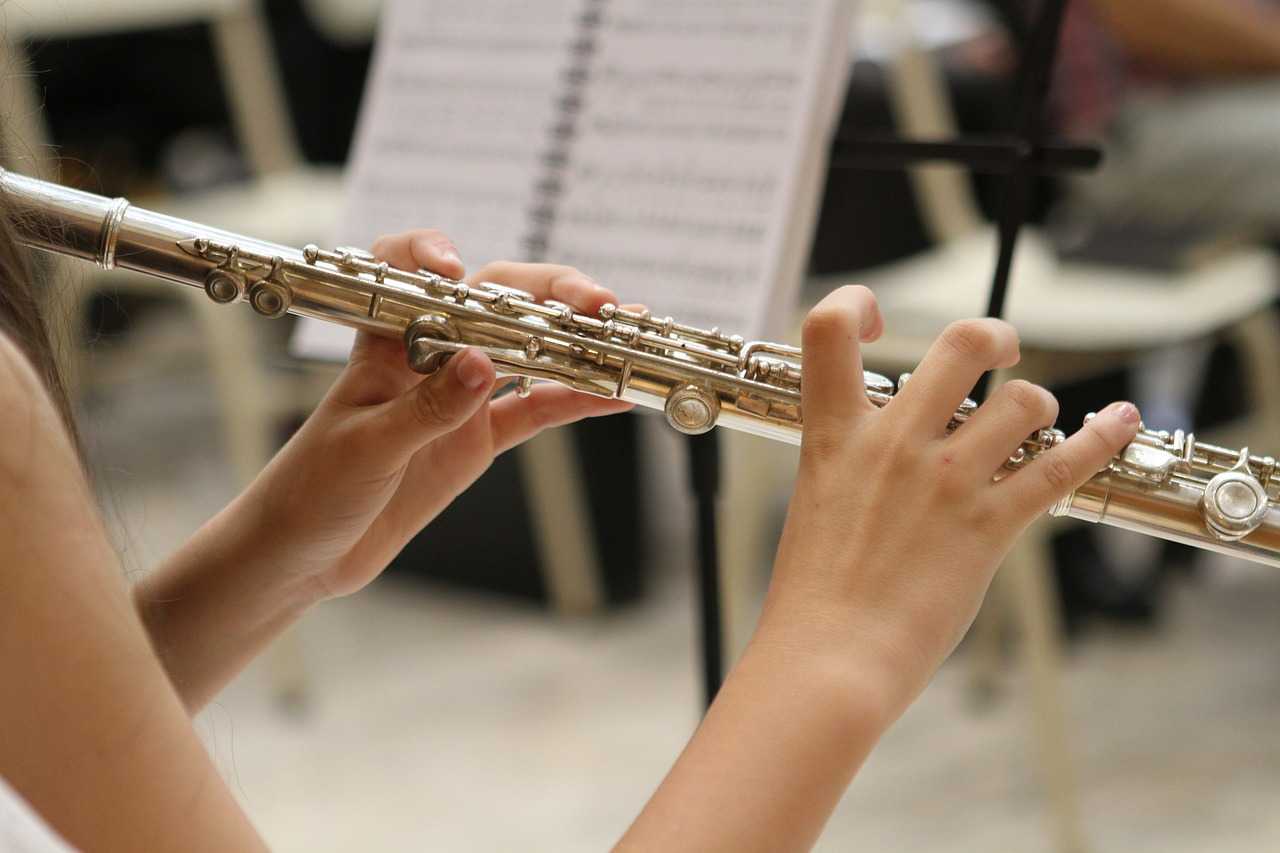Tips to Help You Learn to Make a Sound on the Flute

Playing The Flute
The flute is a wonderful instrument to play. It’s versatile and beautiful, but it can also be challenging to learn, especially when you first start up. When you start taking flute lessons, the first challenge you’ll face is learning how to make a sound on the flute. Here at Sage Music, we have talented teachers who can help you along in the process, providing you with one-on-one guidance.
As you learn the flute, these tips can help you to make a sound and begin to improve your embouchure.
Start with Just the Head Joint
The flute is made up of three pieces, but you really only need to focus on the head joint at first, since that’s where the sound is produced. I often have my students play with just the head joint during their first lesson or two. There are a few reasons behind this.
First of all, when the flute is fully assembled and you’re learning how to hold it and balance it, your arms can start to get tired quickly. As you start to tire, you start to tense up your body – particularly your arms, hands, and neck – which isn’t conducive to helping you get a sound on the instrument.
Secondly, if you’re worried about keeping the instrument balanced, you aren’t as focused on what you’re doing with your mouth and the angle of the head joint. Using just the head joint eliminates this issue. Once my students have learned how to consistently produce a sound, then they’re ready to work with the fully assembled flute.

Use a Mirror
Mirrors are very helpful as you learn to play, and I encourage all of my students to use mirrors when they’re practicing at home, too. Look in a mirror and see what your body is doing as you practice. When you get a sound, what position are your lips in? Where are you positioned against the lip plate? What angle are you using the blow into the flute?
You can also observe your music teacher and try to replicate his or her position in the mirror. I spend lots of time working right next to my students during those initial flute lessons. We both look into the mirror and I can demonstrate an ideal embouchure position on the flute.
Keep Practice Sessions Short
When you’re learning to make a sound on the flute, you’ll exhale a lot of air in a short period of time. This can make you lightheaded at first, but this sensation will gradually go away as your body adjusts and you learn how to better direct your air.
Be sure to keep your practice sessions short at first. If you feel lightheaded, stop playing and resume breathing normally for a few minutes.

Make Tiny Adjustments
The flute is incredibly sensitive, and the tiniest adjustments in your embouchure can make a big difference in your tone production. I find that many new flute students tend to overcorrect when they’re just starting out, and these large corrections cause them to end up too far in the other extreme.
Whether you’re changing the angle of the flute, adjusting your position on the lip plate, or are changing your embouchure, think, “less is more.” Make a small adjustment first, and then, if you need to, make another small adjustment. You’re more likely to get good results with this strategy than you are with larger adjustments.
Work with a Great Teacher
Your music teacher can help to speed along the process as you learn how to make a sound on the flute. Look for a great flute teacher who has plenty of experience with the instrument, and who also frequently works with beginners. A great flute teacher will understand how to help you make adjustments and will be able to provide specific advice based on your own habits and tendencies.
At Sage Music, all of our teachers have excellent experience as musicians, but they’re also passionate about teaching. They understand not only how to play, but specifically how to teach, too. Because we train them with our unique teacher training, and in the use of our exclusive ARPEGGIO™ lesson system.
Be Patient
Learning any instrument is a difficult process, but learning the flute, especially in the beginning, requires extra patience on your part. Some students will be able to make a sound on their first day of playing, while it can take others days, weeks, or even a month before they find the right position in order to be able to consistently produce a sound.
As you become more familiar with the flute, you’ll start to develop a “feel” for the right position against the lip plate and the head joint. You’ll be able to quickly and reliable produce a sound, and from there on, you’ll be able to progress and learn more about this wonderful instrument.
Related

Michael



